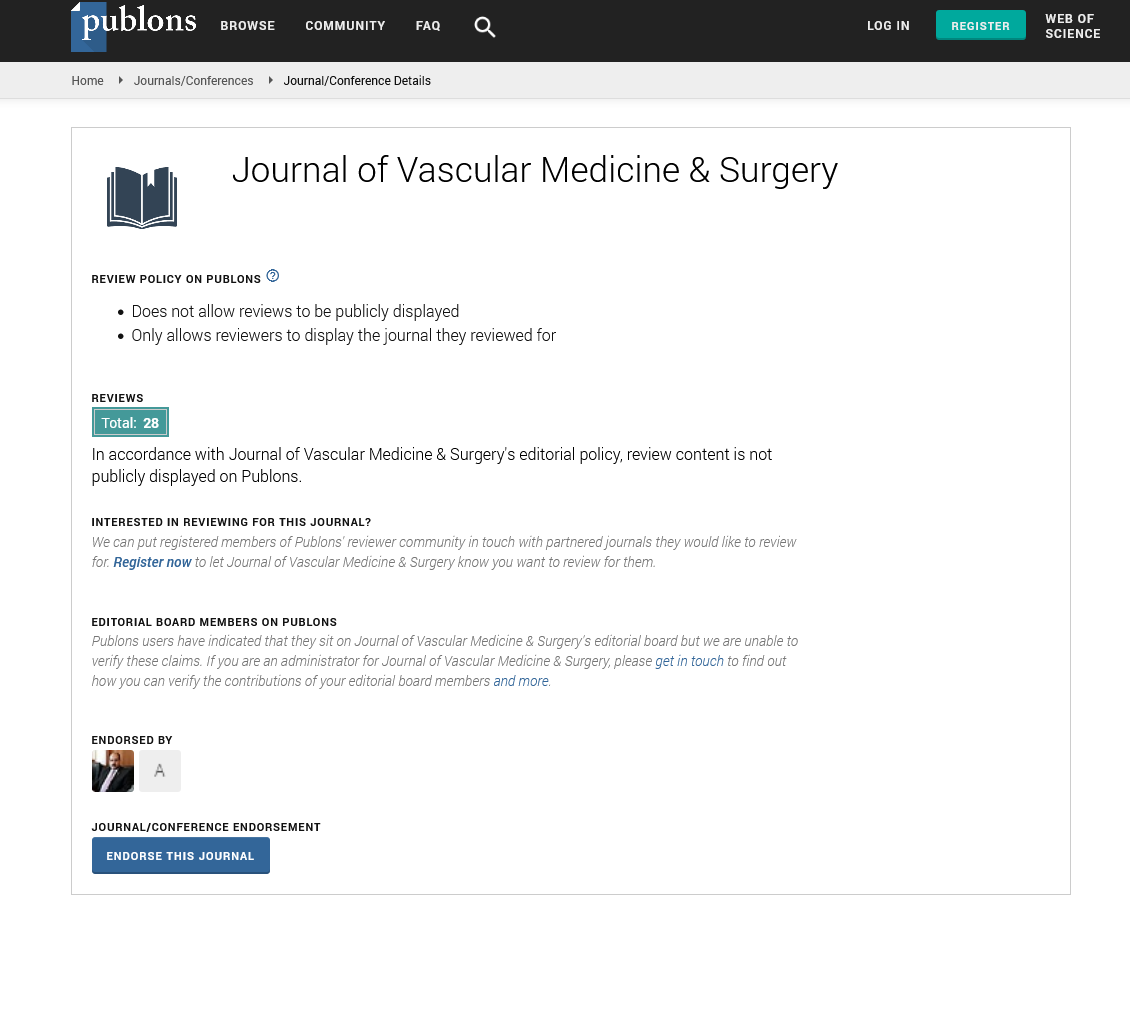Indexed In
- Open J Gate
- Academic Keys
- RefSeek
- Hamdard University
- EBSCO A-Z
- OCLC- WorldCat
- Publons
- Euro Pub
- Google Scholar
- SHERPA ROMEO
Useful Links
Share This Page
Journal Flyer

Open Access Journals
- Agri and Aquaculture
- Biochemistry
- Bioinformatics & Systems Biology
- Business & Management
- Chemistry
- Clinical Sciences
- Engineering
- Food & Nutrition
- General Science
- Genetics & Molecular Biology
- Immunology & Microbiology
- Medical Sciences
- Neuroscience & Psychology
- Nursing & Health Care
- Pharmaceutical Sciences
Abstract
Epidemiology of Venous Thromboembolic Disease at the National Reference Teaching Hospital, N'Djamena, Chad
Naibé Dangwe Temoua, Doune Narcisse*, Zakaria Abdelmadjid Zacharia, Houba Dallah Tchimby Urbain, Adjougoulta Koboy Allah Amine, Allawaye Lucien, Adam Ali Ahmat, Taday Moussa, Médila Moussa Ali, Mahamat-Azaki Oumar, Binwe Dikoua, Langtar Mianrho Hiby, Djimadoum Nahodjide, Bamouni Joel and Zabsonré Patrice
Introduction: Venous thromboembolic disease is a clinical entity that includes deep vein thrombosis and its complication, pulmonary embolism that can lead to an immediate death. Its prevalence in hospitals has evolved over time, especially with improved diagnostic methods, ranging from 1.6% to 15% according to sub-Saharan series. The aim of this study was to describe the epidemiological, clinical and evolutionary profile of at the National Reference Teaching Hospital, N’Djamena and Chad.
Materials and methods: This was a prospective, monocentric cohort study conducted in cardiology department of the National Reference Teaching Hospital. It was spread over a period of three (03) years, from January 1st, 2021 to December 31, 2023. All patients hospitalized and/or followed as outpatient for an acute episode of venous thromboembolic disease in the said department were systematically collected in this registry. Diagnoses were confirmed by venous Doppler ultrasound and pulmonary angiography. The variables studied were sociodemographic, clinical, paraclinical and therapeutic characteristics.
Results: 1,754 patients were hospitalized, including 90 with venous thromboembolic disease, representing a hospital prevalence of 5.1%. The mean age was 48.6 ± 14.4 years, with females predominating (52.2%; n=47). For the majority of patients (92.4%; n=84), this was a first inaugural episode of venous thromboembolic disease. The thrombotic risk factors found were: Prolonged bed rest/long journey, obesity and trauma with 45.6%, 31.6% and 22.8% respectively. Pulmonary embolism symptoms were dominated by dyspnea 95.7% (n=22), chest pain 87% (n=20), dry cough 43.5% (n=10), hemoptysis 21.7% (n=5) and syncope 13% (n=3). Signs associated with thrombophlebitis were mainly swelling of the limb in 93.5% of cases (n=72), pain of the limb 92.2% (n=71) and warmth of the limb 77.9% (n=60). Treatment in all cases involved curative dose low molecular weight heparin, followed by oral anticoagulants. The outcome was favorable in 86.7% (n=78) and patient mortality was 11.1% (n=10).
Conclusion: Venous thromboembolic disease is a multifactorial, frequent and potentially serious disease, which is increasingly diagnosed in our context with the improvement of the therapeutic platform. Prevention remains the most effective weapon in the management strategy.
Published Date: 2025-10-17; Received Date: 2024-04-08

